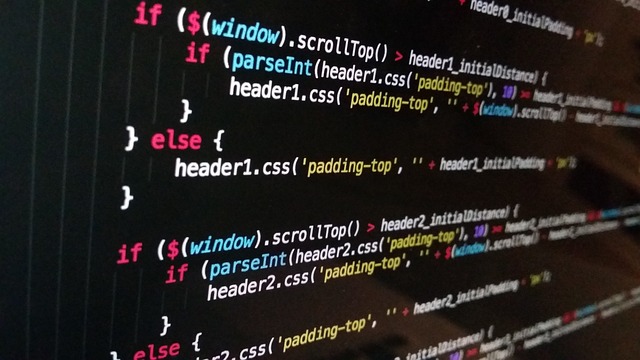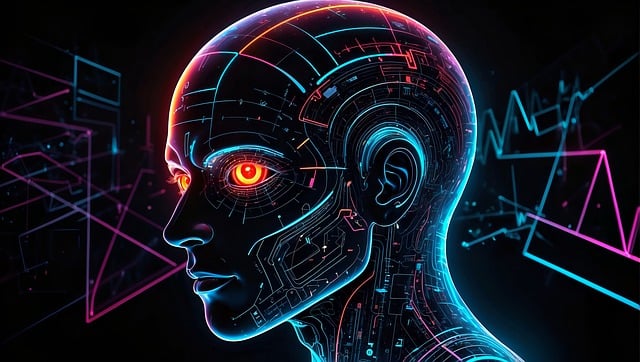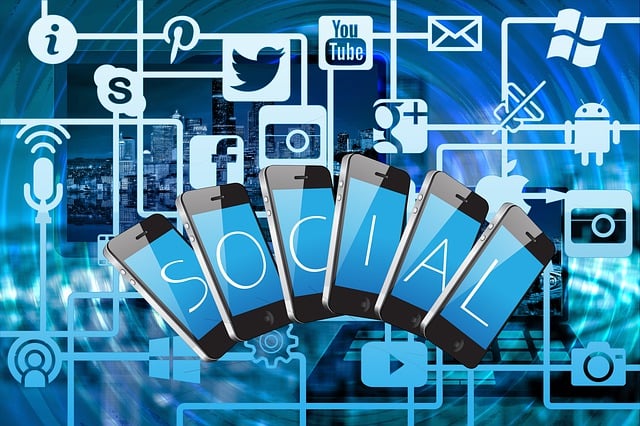The integration of artificial intelligence (AI) tools in education is transforming how teachers plan lessons, deliver content, and engage students. One of the most revolutionary AI tools in education today is ChatGPT in the classroom. This powerful language model by OpenAI enables educators to create personalized learning experiences, automate repetitive tasks, and generate interactive content with ease.
ChatGPT’s versatility in the classroom makes it a valuable resource for improving both teaching efficiency and student engagement. By using this AI tool, teachers can streamline lesson planning, provide real-time feedback, and support diverse learning needs, enhancing the overall educational experience for students and instructors alike.
What is ChatGPT?
ChatGPT is a cutting-edge language model developed by OpenAI, capable of understanding and generating human-like text. This advanced AI tool can assist educators in a variety of ways, making it an essential resource for AI in education. Whether it’s answering questions, drafting educational emails, or creating content, ChatGPT helps streamline many teaching tasks.
Teachers can use ChatGPT to generate lesson plans that are customized to different grade levels and subjects, enhancing the learning experience. From science to literature, ChatGPT adapts to the needs of various disciplines, ensuring lessons are relevant and engaging for students.
Moreover, ChatGPT enables educators to create quizzes, assignments, and even instant feedback, allowing for a more efficient and personalized teaching approach. With its wide range of capabilities, ChatGPT is an indispensable tool for enhancing classroom productivity and fostering student engagement.
Benefits of Using ChatGPT in the Classroom
The use of ChatGPT in the classroom provides numerous advantages for both educators and students. One of the main benefits is the time-saving aspect, as teachers can automate repetitive tasks such as grading, quiz creation, and lesson planning. This allows educators to focus more on interactive teaching and personalized instruction.
ChatGPT also enhances student engagement by offering real-time assistance and personalized feedback. The AI’s ability to cater to different learning speeds and needs makes it an ideal tool for differentiated instruction. It can provide targeted support to students, whether they need extra help with a particular subject or are ready for advanced challenges.
- Time-saving for teachers: Automate repetitive tasks like grading and quiz creation.
- Increased engagement: Create interactive lessons and personalized learning experiences.
- Support diverse learners: Offer tailored support for students with different learning styles and needs.
- Real-time assistance: Provide students with immediate feedback and support.
- Enhanced creativity: Brainstorm ideas, write stories, or simulate historical figures in discussions.
Practical Ways to Use ChatGPT in the Classroom
ChatGPT offers a wide range of practical applications that can significantly enhance classroom experiences. Educators can use it to generate lesson plans, quizzes, and even discussion prompts tailored to specific subjects and grade levels. It also helps in personalizing learning by providing students with explanations, examples, and feedback suited to their individual needs. Additionally, ChatGPT can be used to create interactive exercises such as vocabulary games, problem-solving tasks, or simulations of historical events, making lessons more engaging and dynamic.
Whether used for homework help or in-class activities, ChatGPT can become an indispensable tool for fostering a more interactive and personalized learning environment.
1. Lesson Planning
ChatGPT can help teachers design comprehensive lesson plans, suggest activities, and provide curriculum-aligned content. For example, you can ask:
"Create a lesson plan for 8th-grade science on the topic of ecosystems."
2. Creating Quizzes and Assessments
ChatGPT can be a powerful tool for generating various types of assessments in the classroom. Teachers can quickly generate multiple-choice questions, fill-in-the-blank quizzes, and even short-answer assessments tailored to specific topics or grade levels. This makes it easier to create engaging quizzes for students with minimal effort.
Moreover, ChatGPT helps align assessments with learning objectives, ensuring that each quiz or test supports the goals of the lesson. The AI tool provides accurate questions that match the desired level of difficulty and subject matter.
With its versatility, ChatGPT allows educators to quickly adapt assessments to meet the needs of diverse learners, making it a valuable resource for personalized education.
3. Personalized Learning
ChatGPT is an excellent tool for providing students with individualized explanations. Whether a student is struggling with a topic or seeking advanced knowledge, ChatGPT in the classroom adapts to varying learning speeds and levels.
It can generate practice questions tailored to a student’s understanding, reinforcing key concepts. By breaking down complex topics into simpler explanations, ChatGPT enhances comprehension.
Moreover, the AI tool offers concise summaries of lessons, making it easier for students to revisit and reinforce what they’ve learned.
4. Writing and Grammar Assistance
Students can use ChatGPT to get assistance with grammar, sentence structure, and vocabulary improvement in their writing assignments. This AI tool can provide real-time feedback, helping students refine their essays and reports by identifying errors and suggesting improvements.
With ChatGPT for writing, students can enhance their writing skills, making their work clearer and more cohesive. The AI can also suggest better word choices, helping students expand their vocabulary and express ideas more effectively.
Additionally, ChatGPT can serve as a personal writing assistant, helping students practice and improve their writing techniques through targeted feedback and support.
5. Generating Writing Prompts
Need creative ideas for writing assignments? ChatGPT can be an excellent resource for generating a wide variety of writing prompts. Whether you need ideas for narratives, persuasive essays, or reflective journals, ChatGPT has you covered.
By simply providing a topic or subject, ChatGPT can suggest unique and thought-provoking prompts to spark students’ creativity. This is particularly helpful for educators looking to challenge students and encourage critical thinking.
Incorporating ChatGPT into the classroom allows for continuous innovation in writing assignments, helping students develop their writing skills while staying engaged.
6. Class Discussions and Debates
You can use ChatGPT to simulate historical or fictional characters, making class discussions more engaging and dynamic. This tool allows students to interact with AI-generated personas, creating immersive experiences that bring history and literature to life.
By interacting with these AI personas, students gain a deeper understanding of historical events, literary works, and various subjects. ChatGPT helps them engage in role-playing exercises that encourage critical thinking and empathy.
This creative use of AI in education fosters a deeper connection to the material and enhances student participation in classroom activities.
7. Coding and STEM Support
In STEM classes, ChatGPT serves as a valuable assistant for both students and teachers. It can help students debug code, offering real-time solutions and explanations for programming errors, making coding exercises more efficient.
Additionally, ChatGPT simplifies complex math concepts by providing step-by-step explanations and examples. This helps students grasp difficult topics at their own pace.
For problem-solving, ChatGPT can solve equations and assist in understanding formulas, ensuring students receive the support they need for mastering STEM subjects.
ChatGPT Prompts for Educators
Here are some example prompts you can use:
- “Explain the water cycle to a 5th-grade student.”
- “Generate a 10-question quiz on World War II with answers.
- “Help me create a rubric for a group project on renewable energy.
- “Act as a historical figure and answer questions about the American Revolution.
Addressing Concerns: Ethics and Accuracy
While ChatGPT is a powerful educational tool, it’s important to consider ethical use:
- Fact-checking: Always verify factual information as AI can sometimes provide incorrect data.
- Plagiarism: Teach students to use AI as a support tool, not to copy responses directly.
- Bias and inclusivity: Be aware of potential biases in AI-generated content and promote inclusive language.
Teacher Tips for Effective Use of ChatGPT
To maximize the benefits of ChatGPT in the classroom, teachers should establish clear guidelines for its use. Encourage students to engage with the AI tool as a supplement to their learning, not a substitute for independent thinking. Additionally, regularly monitor AI-generated content to ensure accuracy and relevance. Teachers can also integrate ChatGPT into lesson plans as an interactive tool for real-time problem-solving, promoting critical thinking and creativity in students.
Case Studies: Real-World Applications
In real-world classrooms, ChatGPT has already demonstrated its potential in various subjects. For example, a middle school English teacher used ChatGPT to provide instant grammar feedback on student essays, significantly improving writing quality. In a high school history class, teachers utilized ChatGPT to simulate debates between historical figures, enhancing student engagement. Additionally, STEM instructors have employed ChatGPT for real-time coding support and mathematical problem-solving, creating a more interactive and efficient learning environment.
Case Study 1: Middle School English Teacher
A middle school English teacher successfully integrates ChatGPT in the classroom to enhance student writing. By using ChatGPT to generate personalized essay feedback, the teacher provides students with instant, detailed suggestions for improving their work.
This use of AI-powered tools saves valuable time during grading, allowing the teacher to focus more on individualized instruction. Additionally, ChatGPT offers grammar and syntax corrections, helping students refine their writing skills.
The result is improved writing quality across the class, with students receiving more targeted feedback and the teacher benefiting from streamlined grading processes.
Case Study 2: High School History Class
In a high school history class, ChatGPT is used to simulate debates between historical figures, enhancing student engagement and comprehension. Teachers prompt the AI to role-play as figures like George Washington or Cleopatra, creating dynamic and interactive discussions that bring history to life.
This innovative approach encourages students to analyze historical events from multiple perspectives. By engaging in these simulated debates, students gain a deeper understanding of historical contexts and motivations.
ChatGPT also helps students improve their critical thinking and communication skills, fostering a more immersive learning experience in history education.
Case Study 3: STEM Instructor
In this case study, a STEM instructor uses ChatGPT to provide real-time coding assistance to students. When students encounter programming challenges, they can ask ChatGPT for help debugging code or understanding specific coding concepts, enabling them to overcome obstacles quickly.
Additionally, the instructor uses ChatGPT to simplify complex science explanations, offering detailed answers and examples tailored to student questions. This personalized support helps students grasp difficult scientific principles more effectively.
By integrating ChatGPT into daily lessons, the instructor fosters an interactive learning environment where students receive immediate, customized support in both coding and science.
Tools and Integrations
- Google Docs: Integrate with extensions to use ChatGPT directly in your documents.
- LMS Platforms: Use ChatGPT prompts inside systems like Canvas or Google Classroom.
- Educational Apps: Some tools now offer ChatGPT-powered features, like AI tutors or assignment generators.
With these integrations, ChatGPT becomes even more powerful and accessible for educators. Teachers can easily incorporate AI into their workflow, whether it’s generating content directly in documents or utilizing prompts within learning management systems (LMS). These tools enhance lesson planning, grading, and student engagement, making ChatGPT an invaluable asset for modern classrooms. As more educational apps continue to integrate ChatGPT, its potential to transform education grows even further.
Future of ChatGPT in Education
As AI in education evolves, tools like ChatGPT will become even more integral to the learning environment. These advancements promise to enhance personalization and efficiency in teaching.
In the future, ChatGPT in the classroom may function as a personalized learning assistant, helping students progress at their own pace. Additionally, AI tools like ChatGPT can automate grading and feedback, saving teachers valuable time.
Overall, AI-powered tools will transform the classroom, creating smarter, more interactive educational experiences for both teachers and students.
Conclusion
ChatGPT is more than just a chatbot—it’s a multifaceted educational assistant that can transform the way teaching and learning happen. With proper use and oversight, educators can harness its power to save time, boost student engagement, and improve outcomes across the board. Start small, experiment with different use cases, and watch how AI can enhance your classroom experience.






